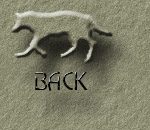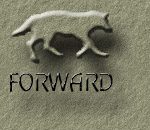Canis
latrans - Coyote
Range: North America
and Central America
Size: 25
- 75 lb (11 - 34 kg)
Note the extreme
difference in colouration between the two teeth shown below. Despite
being of similar age, the colour differences are due merely to the chemical
conditions under which each was fossilized. Thus, colouration is
not necessarily a reliable characteristic in determining the age of a fossil.
The presence of certain minerals in the material surrounding a bone or
tooth are responsible for the colour it will eventually have as a fossil.
The black tooth at right, for example, possibly contains large amounts
of manganese. The tooth at left retains the same colours as a modern,
unfossilized tooth, indicating a lack of mineral influence in respect to
colour during fossilization. The tooth on the left is a right maxillary
carnassial of Pleistocene age from a river terrace in Bonner Springs, Kansas.
The one at right is a right mandibular carnassial of Late Pleistocene age
(10-500 thousand years old) from the Aucilla River in Jefferson County,
Florida. |


